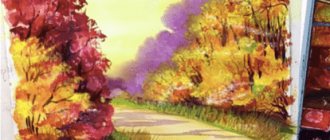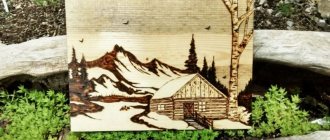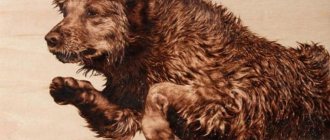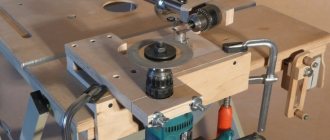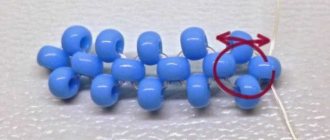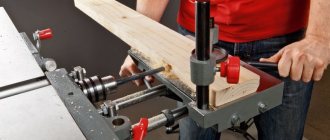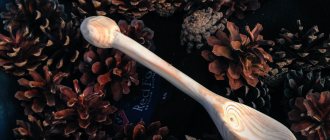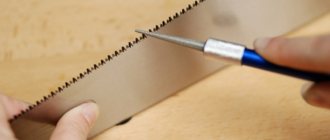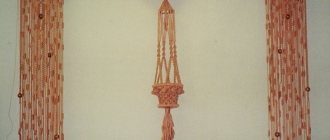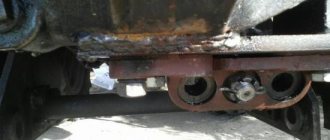Wood carving is an amazingly beautiful and very popular type of hand-made wood processing these days. The carved interior details captivate with their magnificent appearance and reflect rich national traditions.
Creative people who are simply itching to do something very interesting and useful should pay attention to wood carving. Girls and women may think that this is only a man's activity. And they will be wrong, because there are no fewer women woodcarvers than men.
Tatyana Boeva from Kamchatka
Tools for work
Truly high demands are placed on specialized carver tools. The skill of the performer plays an important role. But only with correctly selected and carefully sharpened tools will a master be able to demonstrate his skills in full force.
And if a professional easily and at first glance determines the quality of devices for work, then a beginner is invariably lost and can make a mistake.
First of all, you should purchase:
- quality knives;
- chisels (several pieces);
- needle files;
- hacksaws cutting metal;
- clamping device;
- sandpaper of different grain sizes;
- drill and several types of drills;
- wooden bars.
Knives
It is best to buy knives in a specialized store of goods for creativity and hand-made goods. They must be made from high quality steel. If funds are limited, you can temporarily buy simpler knives, but sharpen them well.
Experts speak positively about tools from the Tatyana, Narex and Kogatana brands.
Chisels
At first, instead of chisels, you can use a sharpened screwdriver and file.
When purchasing chisels, pay attention to the following types:
- Flat - a chisel in the shape of an elongated rod with a cutting edge at the end; it is needed during the initial processing of wood.
- Semicircular is one of the most popular types; it can be of varying degrees of roundness: medium, round or sloping.
- V-shaped - necessary when making geometric threads.
Machine
Carving on a machine has enormous potential, simplifying this work and turning it into pleasure. Modern models are not cheap at all, but professionals characterize them from the best side.
The machines can simplify many labor-intensive operations familiar to carvers:
- surface treatment at different angles;
- drilling recesses, grooves and grooves;
- milling;
- the actual carving.
There are huge differences in the sizes of machine models and in the technology of their operation:
- manual;
- milling and engraving;
- laser;
- CNC machines.
To simplify many operations of artistic carving, professionals advise purchasing a CNC machine. But if a novice craftsman just wants to try himself and see if this hobby is suitable for him, a manual machine is quite enough.
Criterias of choice
Today, purchasing a tool is quite simple. Many stores provide a wide selection. But how can you avoid running into Chinese disposable products? This is a more complicated question.
It’s best to start by studying specialized forums and listening to the opinions of professionals. And it will be even better if you can find a real master and chat with him “live”.
But this is rare, so when purchasing a set or tool separately, do not hesitate to ask what grade of steel the product is and who the manufacturer is. Take a block of wood with you to the store and try on the spot how the tool will fit in your hand and what its cut will be like.
Price categories vary, but it is clear that a set of 10 items costing 300-400 rubles will not be normal. This means that saving is not worth it here.
Yes, the tool can be quite expensive, but again, a few items are enough for a novice master. And the rest can be purchased as your skill improves.
Wood carving for beginners
In order to master the skill of turning objects from ordinary wood into works of art over time, you need to gradually go through lessons, moving from simple to complex.
To learn how to create decorative wooden elements, you need to know the technology of work and possess the necessary tools, without neglecting safety precautions.
Masters advise beginners, especially children, to first master the basics of contour carving. For it you will need:
- wooden canvas or object for decoration;
- set of chisels;
- blunt knife;
- pencils;
- sketch (drawing);
- sandpaper.
First, using a sample, you need to check how to work with each of the chisels, see what it is needed for, and practice.
Then the sketch from the paper needs to be transferred to the workpiece.
Only after studying the basic principles of working with the tool can you proceed to testing the products.
The most common are sketches with images of flora and fauna, and landscape sketches.
After applying the pattern, the wood must be sanded and varnished.
Types of knife blades
A classic jamb knife can have blades of different widths, blade angles and a conveniently shaped handle for a specific type of work. The blade of the knife can be made in the form of a triangle (the flag knife is very popular) or have another shape.
The knife can have different sharpening options, smooth or sharp cutting edge shapes. Understanding which blade is needed depends on the specific type of work, the design being performed and the experience of the craftsman.
As in the case of a blunt knife, the prerequisites for the quality of a knife with any blade shape are the sharpness of the blade and the comfort of the handle. The attachment of the knife blade to the handle must be perfect and reliable.
Mistakes and how to avoid them
It takes a lot of time to master carving. And it goes not only to learning how to work with a tool, but also to coping with the consequences of failures and mistakes that are made due to inexperience.
Professionals advise paying attention to these “little things” that can ruin the final result:
- Only well-dried wood should be used.
- You should not hastily delve into the surface of the workpiece; all movements should be made smoothly and with minimal pressure on the tool.
- It is necessary to take into account the specifics of different types of wood, having studied it additionally, with different types of wood and you need to work differently.
- You can’t start working without a sketch; a beginner should give up improvising.
- You can’t grab onto everything at once and try to complete complex tasks; you need to gradually move from the simplest tasks to more complex ones.
Types of thread
There are many techniques for processing wood, with the help of which craftsmen create real works of art from it.
As such, a strict classification has not yet been created, but conditionally all techniques can be divided into several types.
Flat socket carving: a flat wooden surface acts as a background. The pattern is formed using notches of various shapes.
Flat grooved threads are:
- Geometric has a pattern in the form of a bizarre combination of various geometric shapes.
- Contour forms a pattern in the form of a rigidly drawn outline, as if pressed into the surface.
Flat-relief carving highlights a convex pattern on a background deepened with the help of a tool.
Flat relief carving can be:
- Oval - the pattern on it is located in the shape of an oval, often filling the entire space of the canvas with small recesses.
- With a selected background, a large ornament appears against the background of the space scraped out by the tool.
Relief carving: three-dimensional paintings, practically devoid of a flat background.
Relief carving can be:
- The bas-relief has protruding figures of medium height (about half of their volume).
- High relief - the background is deeply recessed, the figures are very voluminous and protrude greatly.
- “Tatyanka” - a convex pattern fills the entire space of the product, the elements merge, turning into each other (usually the theme is botanical).
The slotted thread can have the appearance of flat-relief or relief. The pattern is made by completely removing wood fragments and leaving through voids between the elements of the pattern.
The slotted thread is:
- Openwork: has protruding parts combined with cut holes, widely used for decorating furniture sets in the Baroque and Rococo styles.
- Overlay: made up of figures cut through and with protruding elements, processed only on the front side.
Sculptural carving - the depicted objects are separated from the background and represent a full-fledged sculpture.
House carving is the creation of elements used to decorate wooden buildings.
Slotted thread
One of the most visually impressive is the slotted carving. It is great for interior and exterior decoration of houses. Decorating a piece of furniture, window frames or decorative cornices with it means attracting everyone’s attention and admiration to them. For many, this type of carving is associated specifically with Russian culture and applied art.
It is generally accepted that cutting through patterns on a large scale and developing this art began mainly with the advent of thin and wide wooden panels on an industrial scale. After all, before this, such blanks had to be cut out by hand with great difficulty.
Before cutting through the pattern, you need to make a design on the surface. You can come up with it yourself, or you can use a ready-made diagram from the Internet.
To make a slot, the board is drilled in several places from the inside out with a special drill or chisel. A jigsaw file is inserted into the resulting hole, which is used to make a slot according to the drawn diagram.
If the pattern element is small, then special files with small teeth are used for the same purpose. The remaining elements can be further decorated with patterns for decorative purposes.
After completing the drawing, the product is processed with sandpaper and a file.
In order to protect and make it more decorative, the wood can be additionally varnished.
The slotting technique is the type of carving that beginners in this business are advised to start with. Of course, complex ornate patterns won’t work out at first, but this is a great way to practice and make something truly beautiful!
If a novice master wants to learn the craft of wood carving, he should be patient and learn all the nuances. But only with the help of constant training and making products of varying degrees of complexity can you achieve impressive success!
My own master 2005-02, page 24
CUTTING THREAD ON WOODEN PARTS
In combination with a wood lathe, this device replaces a metal lathe. It is "borrowing"
To use the faceplates of a wood lathe for the jig
At the other end of the block, a socket is drilled out, the diameter of which is slightly larger than the size of the nut. In order for the latter to rotate with some effort, a wooden disk is put on it, which is pressed against the block with a latch. The clamping force is adjusted with a knurled screw (or regular) screwed into a threaded bushing glued into the block.
Then they make a cross-feed unit for the cutter - a wide carriage that moves
Wooden Free ?dgsk Threaded nut ^ bushing
Cross Feed Base
Rice. 1. A device for cutting threads on wooden parts.
A thread with an angle of 6O of 1 profile is cut with a modified milling cutter
The drive is secured with a clamp.
To avoid vibration,
its base is bolted to the carriage
Movable cross feed unit carriage
The locking bolt removes play in the dovetail of the cross feed unit.
Insert in guide 1 swallowtail"
Block with threaded pin
Thumb screw adjusting force
Bolts securing block with threaded rod
shaft”, the latter has a cross-feed unit for the cutter at a right angle to the workpiece, as well as the ability to install the cutter depending on the diameter of the part and the depth of the thread. The part is fed relative to the cutter by rotating the handle of the threaded rod of the longitudinal feed unit.
The “screws” and “nuts” are installed in a wedge chuck screwed to a metal faceplate that rotates with a threaded rod. The latter is fixed in a housing that moves forward/backward along the base. The housing with a stud is removable and can be replaced with another housing with a stud with a larger or smaller thread pitch.
The thread pitch on the stud determines the thread pitch on the part. True, each stud will also require its own faceplate with appropriate adapters for installation on a lathe in order to avoid re-centering the part when reinstalling it from the machine to a homemade thread-cutting device.
Source: zhurnalko.net
